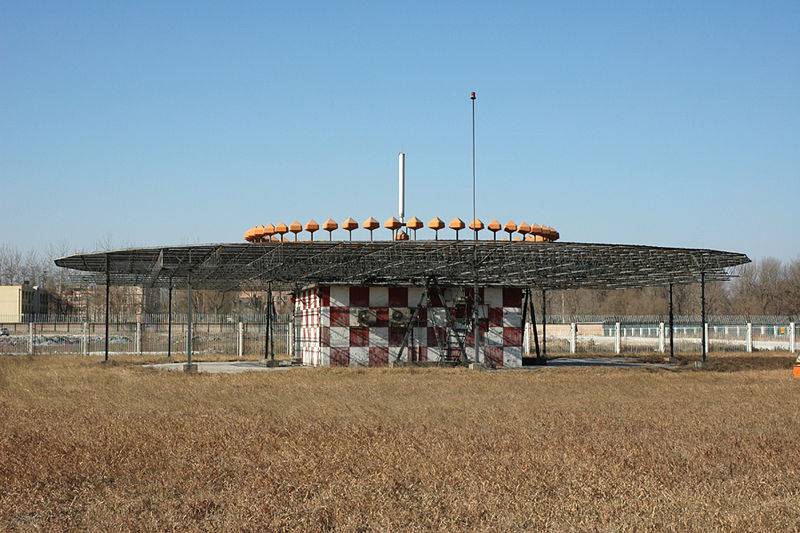January 25, 2011
 The Civil Aviation Authority of the Philippines (CAAP) and Manila International Airport Authority (MIAA) is in hot water again when it finally decided to buy a new VOR (very high frequency omnidirectional range) system in the face of an impending implementation of a multibillion-peso project dubbed as the Air Traffic Management/Communication Navigation System (ATM/CNS) being implemented by the Department of Transportation and Communications (DOTC).
The Civil Aviation Authority of the Philippines (CAAP) and Manila International Airport Authority (MIAA) is in hot water again when it finally decided to buy a new VOR (very high frequency omnidirectional range) system in the face of an impending implementation of a multibillion-peso project dubbed as the Air Traffic Management/Communication Navigation System (ATM/CNS) being implemented by the Department of Transportation and Communications (DOTC).The P4 Billion ATM/CNS project was awarded by the DOTC to Thales Australia, a French-based electronics company subsidiary that provides information systems for defense security, aerospace and transportation, in partnership with Japan’s Sumitomo Co., was given the contract for the installation and modernization of navigation surveillance and air traffic management (CNS/ATM) system across the country. The system relies on the networks of orbiting satellites and is now being used by countries in Asia-Pacific like China, Singapore, Taiwan, Vietnam, Indonesia, South Korea, Australia and Thailand.
The Philippines made a commitment to ICAO to install the system by 2010 but due to budgetary and bidding concern is expected to be completed only in 2013, after a loan grant from Japan.
The VOR [very high frequency omnidirectional range] is the international standard for short-range navigation providing the bearing information to the pilot from a reference point. It helps pilots determine their relative direction to or from the station, and would become a secondary means of aiding pilot once the ATM/CNS is in place.
The VOR station was damaged during tropical storm “Ondoy” in September last year and was kept operating through a power supply borrowed from Subic international Airport.
But CAAP personnel are asking why the Agency is giving priority to the purchase of a new navigational aids when refurbishment will do.
Andy Basallote, Chief of Air Navigation Service (ANS), says there are two ways to replace a navigational aid: restoration, which means replacing or renewing an existing one; or replacement, which meant buying an entirely new VOR.
A new VOR would cost from P80 million to P120 million based on UK's Marconi and France' Thales price tag, but Thales Australia has offered P50 million to lease its VOR for 5 years.
CAAP Director-General Ramon Gutierrez said that since their office doesn't have the money to fund the procurement, they would instead borrow P80-million from MIAA to fund the purchase of the new aviation equipment considering the price difference to the brand new unit.
He said since the CAAP has diminutive resources and cannot be able to procure such device, the Manila International Airport Authority (MIAA) will make the financial arrangement while the aviation agency takes care of the services. From its original P120-million funds they requested, the budget was slashed to P80-million by President Benigno Aquino III.
Both MIAA and CAAP are shopping for a new VOR to replace its aging equipment that has been giving airline operators headaches because its power supply frequently bogs down, due to incompatibility problems forcing them to fly to alternate airports in Clark particularly during bad weather.
Basallote said if restoration is resorted to, the cost to the government would be about P45 million to P50 million as offered by Thales, since the “old” Distance Measuring Equipment, a separate but integral part of the DVOR, and the “counterpoise” or the steel bracing supporting the whole structure would be retained. But adding P30 million will give you a brand new equipment. So the choice isn't that difficult.
“Malaki ang matitipid, sa open bidding, but, we are inclined to buy a new one because its life span is approximately 10 to 12 years.”
However, the P80-million is P2-million short of the VOR’s original price in the foreign market. Gutierrez disclosed that he was considering a Korean company that was offering a VOR that is worth P80-million.
“But we could not grab it until we know that it is the same brand that we are currently using,” Gutierrez said.
Currently they are evaluating the offer of a Korean company to install a new navigational aid at concessional rate of 1/10 of 1-percent interest per annum for five years, and a warranty of 10 to 12 years.
Gutierrez says he favors using the same brand of VOR made by Thales now in use at the NAIA because training would not be that expensive anymore considering their previous experience with the equipment. Training in Australia is part of the contract and is included in the cost of the equipment assuming they would win.
This smells like corruption: Pesos 45 to 50 Million before and now the new offer from Korea with Pesos 80 Million. That's Pesos 30 to 35 Million of kick-back.
ReplyDeleteNice earning for a month in office.
nothings new!!! thats the problem with most contractors - they tolerate red tape. yung 100 na gamit tinipid sa 80 paano ung 20 binulsa ni juan dela cruz dahil sa gutom. kaya naman ung binili eh kulang din tinipid ang gamit. kung ndi tinipid eh OVER price naman.
ReplyDeletei strongly suggest kunin nyo kung pambili sa mga CAAP employees na walang trabaho kundi makipag-kwentuhan - chismisan lang or yung mga walang pakinabang. MISMO!